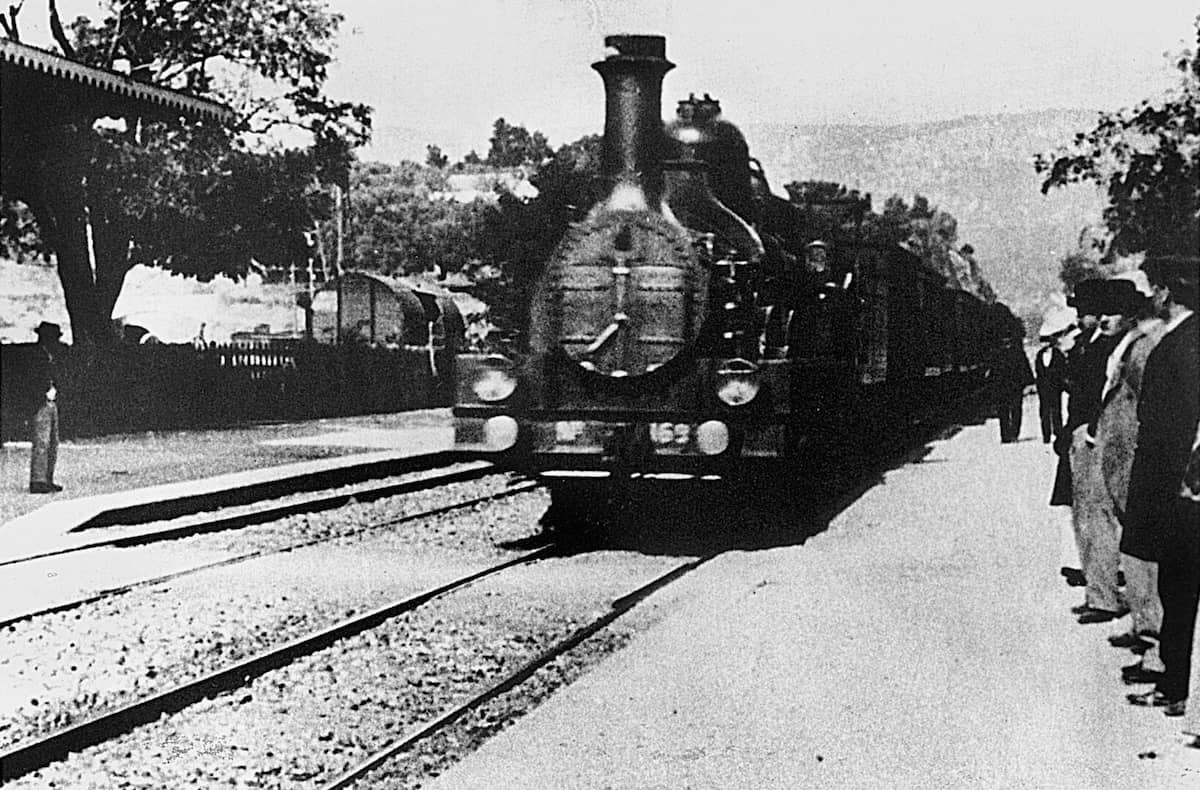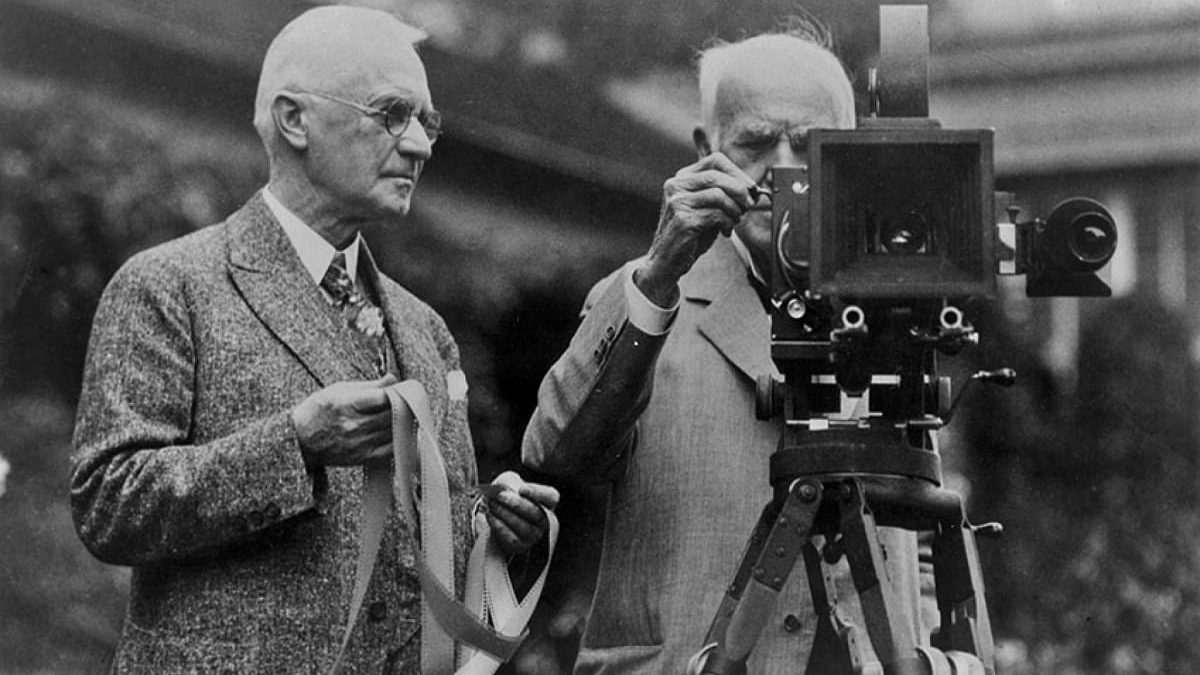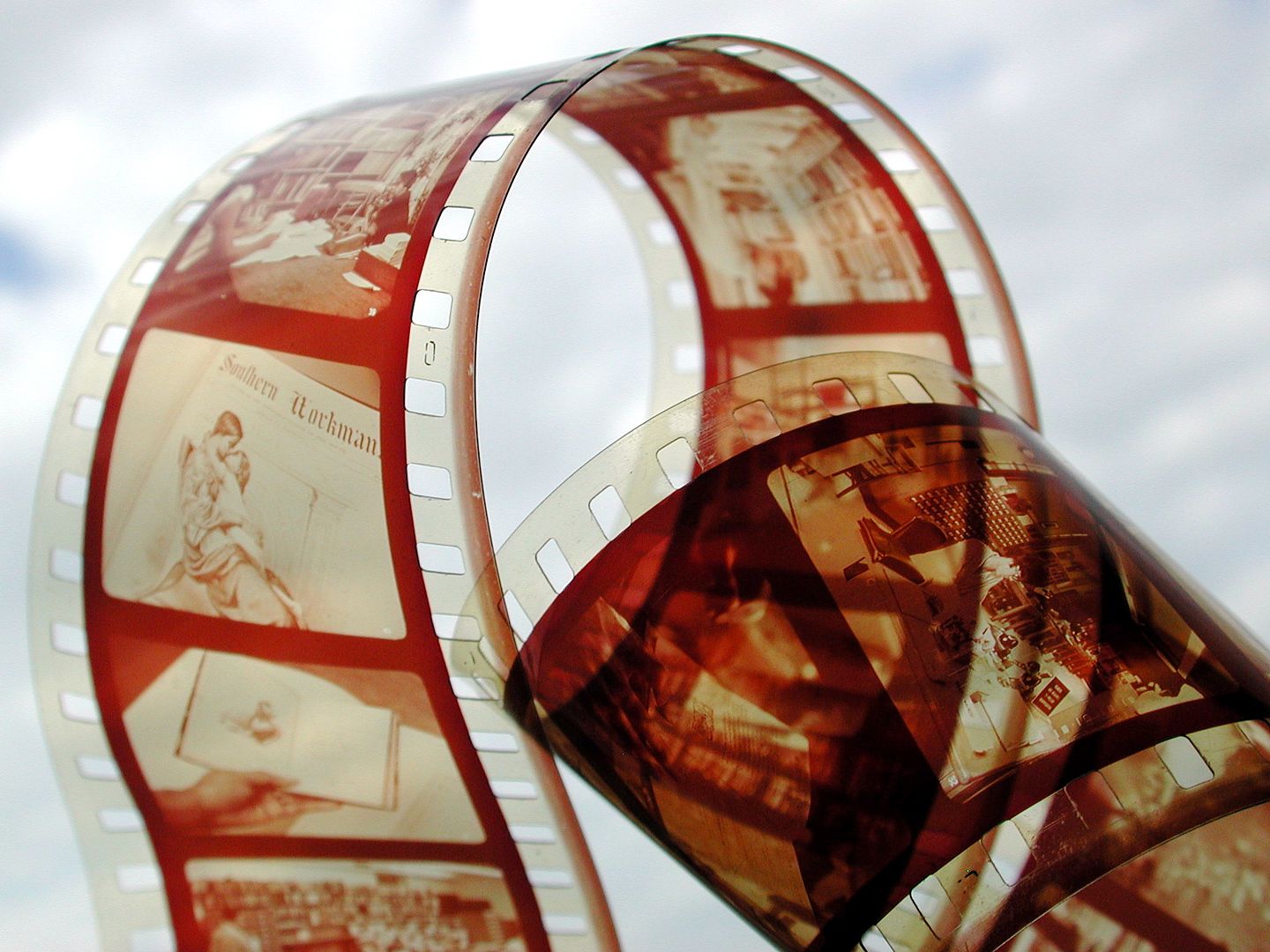If we go to the cinema to relax without thinking too much about its inner workings, it remains the result of an incredible technological evolution marked by groundbreaking firsts.
Kinetograph: The First Camera
The camera is arguably the most iconic tool of the film industry, and it has undergone numerous transformations. The first was the Kinetograph, invented in 1891 by Thomas Edison and William Dickson, based on the work of Étienne-Jules Marey, who had designed an instrument to study the flight of birds. The Kinetograph used 35-millimeter celluloid film perforated on both sides—also invented by Edison—and the moving image had to be viewed inside a wooden box through a peephole called the Kinetoscope.
Invention of Film
A camera needs a recording medium—this is where film comes in, another major symbol of cinema. It was invented in 1888 by John Carbutt and commercialized the following year by George Eastman. He developed nitrate-based film coated with a gelatin emulsion containing silver halide crystals, which reacted to light to capture images. Initially 35 millimeters wide, film later became available in 16 and then 8 millimeters, making amateur filmmaking possible.
First Movie Screening: A Moment of Wonder
The first paid film screening took place in 1895 in the Indian Salon of the Grand Café in Paris. It was organized by the Lumière brothers, who were inspired by their father, who had witnessed the marvels of the Kinetograph in 1894. To modern audiences, these films may not seem like “movies” in the artistic sense, as they had no scripts or creative direction. However, Arrival of a Train at La Ciotat left the well-to-do spectators in awe.
Where Was the First Movie Theater Built?
The Indian Salon of the Grand Café, where the Lumière brothers’ film was shown, could be considered the first movie theater. However, this was a repurposed space, not originally designed for cinema. The first buildings dedicated to film screenings appeared in the early 20th century: Le Petit Journal in 1904, Cinéma-Théâtre in 1906… The Pathé cinema chain, known for its comfortable theaters, was also founded in 1906.
First Sound Film
Until this point, all films were silent. Music was played live by a musician or a phonograph to accompany the visuals.
However, in 1927, The Jazz Singer, produced by the Warner brothers, became the first sound film. It contained only 354 spoken words, but this was a revolution in cinema history. The arrival of sound created a clear divide between the silent era and the new age of “talkies.”
First Film Studio
The concept of the “first film studio” depends on how one defines a studio. If we consider a studio as a dedicated space for filming, the title likely goes to Thomas Edison’s Black Maria, built in 1893 in New Jersey, USA. This tar-paper-covered wooden structure was the world’s first film production facility, designed to shoot short clips for Edison’s Kinetoscope.
It featured a rotating base to follow sunlight, as artificial lighting was not yet advanced enough for indoor filming. The Black Maria primarily produced experimental clips, such as Fred Ott’s Sneeze (1894), as well as vaudeville acts and athletic demonstrations. However, it lacked narrative storytelling or special effects, focusing instead on technical novelty.
Around the same time, the Lumière brothers in Lyon, France, were pioneering cinema in a different way. While they did not build a traditional studio, their workshop became the birthplace of the Cinématographe, a device that could capture, project, and print films.
The Lumière brothers are best known for hosting the first public film screening on December 28, 1895, in Paris. Their films, such as Workers Leaving the Lumière Factory and The Arrival of a Train, were documentary-style “actualités” shot outdoors or in factory settings. Though groundbreaking, their work did not involve a controlled studio environment.
The first modern film studio, designed specifically for narrative filmmaking and special effects, was built by Georges Méliès in 1897 in Montreuil, France. Méliès, a master illusionist, transformed his family estate into a glass-roofed facility with artificial lighting, trapdoors, and painted backdrops. This studio allowed him to control lighting and weather conditions, enabling the creation of fantastical films like A Trip to the Moon (1902). Méliès pioneered techniques such as stop-motion, double exposure, and hand-painted color, establishing cinema as a storytelling medium and inspiring future filmmakers.
While Edison’s Black Maria and the Lumière brothers’ workshop laid the technical and commercial foundations of cinema, Méliès’ studio marked the transition of film into an art form. Other early studios, such as Robert Paul’s in London (1898) and Nordisk Film in Denmark (1906), further expanded the industry by experimenting with special effects and producing large-scale narrative films.



